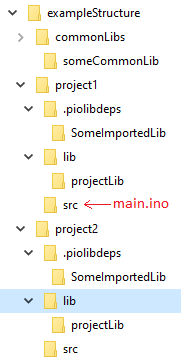Hello ,
I hate to be critical as I did not pay much to use the projectIO IDE, but it sucks. It is very user unfriendly and basic tasks are difficult. I am constantly battling it not finding Include files. I have read about modifying the INI file so it knows where to find the header files. That sort of works, but as my project has a lot of cpp and H files I cannot get it to include them. If the project is in the raceboat folder what is so hard about make it look through all the sub folders. I have used quite a lot of embedded IDE software before and it never had a problem finding a include file.
If I am as silly old bastard, then tell me so but please find me a solution. I have the Teensy 4.1 board.
Ray.
I hate to be critical as I did not pay much to use the projectIO IDE, but it sucks. It is very user unfriendly and basic tasks are difficult. I am constantly battling it not finding Include files. I have read about modifying the INI file so it knows where to find the header files. That sort of works, but as my project has a lot of cpp and H files I cannot get it to include them. If the project is in the raceboat folder what is so hard about make it look through all the sub folders. I have used quite a lot of embedded IDE software before and it never had a problem finding a include file.
If I am as silly old bastard, then tell me so but please find me a solution. I have the Teensy 4.1 board.
Ray.


